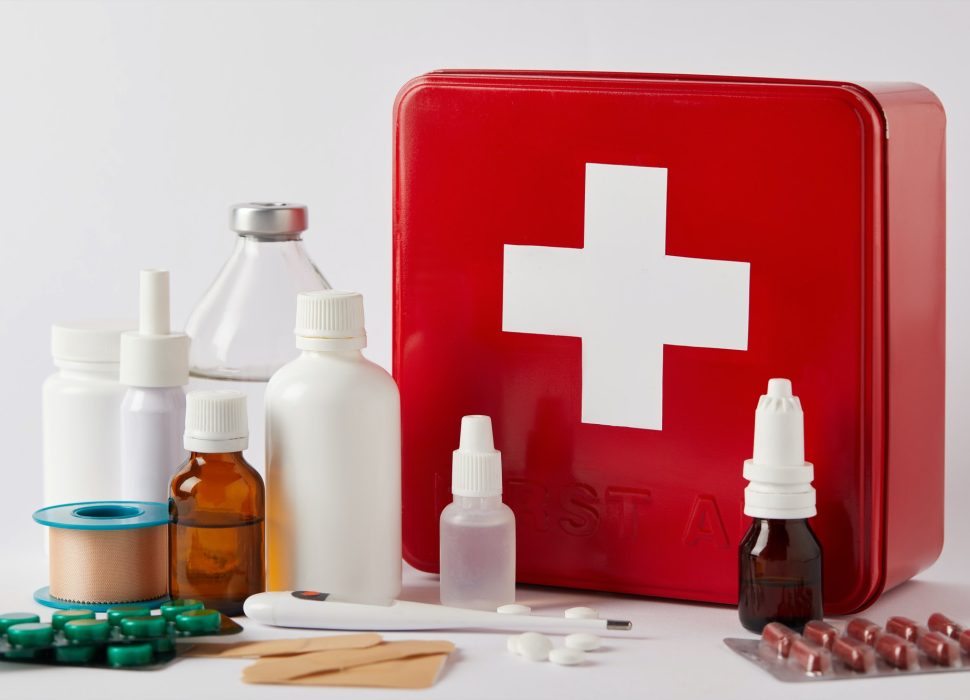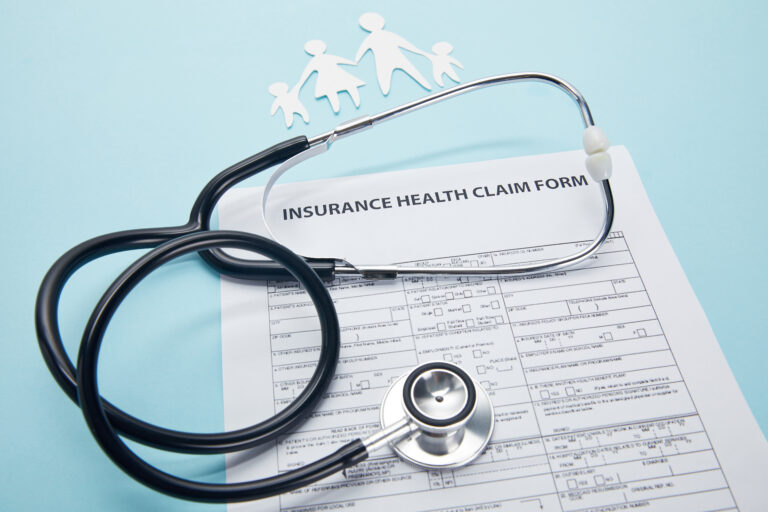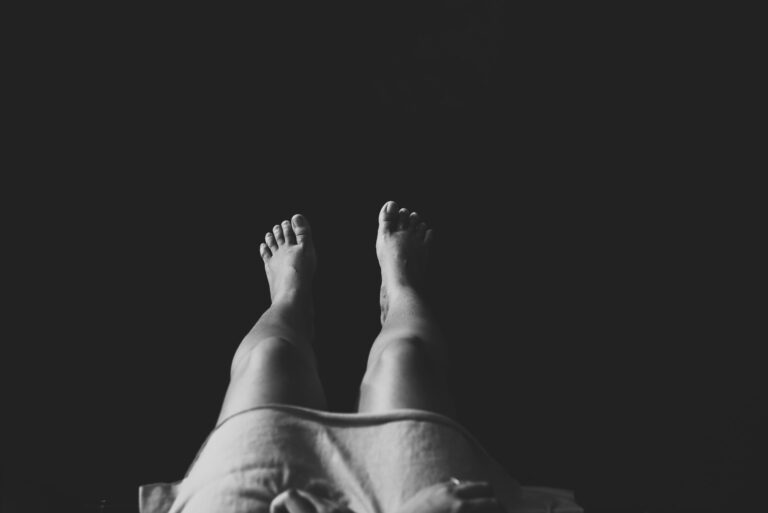When I was preparing for my first surgery I had no real idea what I was going to need to thrive through the process. I had got some great suggestions from others that had been down this road before me and from there I was able to get started on preparing. Now that I have my first surgery in the rearview mirror I have been reflecting on the must-haves and must-dos for my next surgery. Let’s get into it! Here is my version of the Lipedema Surgery Survival Guide.
Trigger Warning – There are photos of bruising and drains if you are squeamish then this post may not be for you.
Mental Marathon
I found the biggest issue to overcome in the entire surgery journey is a mental one. Whether it was the constant ruminating and assessing the details and worries about the unknowns of the upcoming surgery, or the wild rollercoaster of emotions that follow surgery. Every day leading up to surgery and for weeks following have been a mental health marathon. Like many things in life having a good mental attitude and reasonable expectations for outcomes are good starting places for coping through big events. In my case I find my natural state to run a bit more anxious than I’d like. I am a musical human so I reached out to the familiar to help me create some coping for calming myself during stressful moments. I made a playlist of music that made me feel good and calm when I listened to it. I played this music for myself multiple times a day, anytime I felt anxious, and at bedtime for the month before surgery. Every time I felt the chest tightening of anxiety and worry I would listen to my music and breathe deeply. Training my body to relax when I hear the familiar sounds. While I was waiting to go in for my surgery I played my playlist constantly. Once in the operating room, the TLC team put my playlist on the speakers for me to hear while they put me to sleep for my surgery. I found this really helpful and made me feel more in control of my emotions headed into the OR. Here is my playlist
I used my playlist to help restore calm post-op during the rollercoaster of emotions that follow lipedema surgery. Few people I know have talked about the reality of the emotional turmoil this surgery evokes. For me, it was as powerful as the postpartum mood swings I had following the births of my children. I went from happy, to sad and sobbing sometimes in the same sentence. My Love had never seen me like this before and somehow managed it with a loving approach. Bless him.
Hot Travel Tip Ahead!
Travel Survival
If you’re like me and the thought of being crammed into an airline seat gives you heart palpitations then listen up. For travel to California, I booked an economy ticket and then employed a trick I learned from a WestJet employee. Hot Tip! Go to the airport 18-24 hours before your departure and speak with an agent at check-in, ask for a “last 24 hours premium upgrade”. If there are seats available in premium they will often move you there for between 0-$100 per seat. I was fortunate and the agent upgraded us for no cost. Woot!
p.s if you can get row 1 on the plane you will often find the needed leg room for the legs up on the pillow trick.
Elevate your legs
Sitting in premium allows more room for lippy hips which means less pain, stress, and apologies to your seat-mates. The additional legroom allows you to get up and stretch, do leg exercises such as drawing the alphabet with your feet (great for circulation to prevent clots), and best of all elevate your legs.
To elevate I used an inflatable leg pillow that fits neatly in a carry-on bag and then inflates to bring your legs up to nearly level with the seat. It allowed me to perform self MLD on the plane, and reduce the crazy swelling on the post-op return trip. Check out the inflatable pillow link HERE
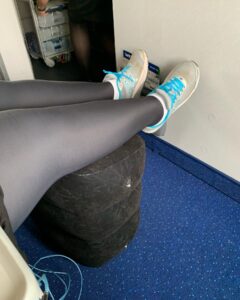
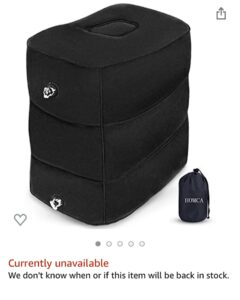
For immediate post-op, I purchased an inflatable wedge pillow that could easily be inflated and did an admirable job elevating my legs. It was my number 1 survival item. In fact, this little $30 pillow has continued to be a daily part of my swelling survival kit even nearly 4 weeks post-op. You need one! Link HERE

Wheelchair transport post-op
I was on the fence about this one as I felt like I could maybe handle the walking through security and the airports on the way home following surgery. I trusted the advice of my lippy sisters and made arrangements with the airline for wheelchair assistance at the airports. It was so worth it. Having the wheelchair assistance helped get my exhausted swollen body through security, customs and the airports quickly. On the flights, my legs swelled to double or triple their size and it was so intense I could not have walked the distances required alone. Wheelchairs for the win. Plus walking your wheelchair around during layovers gives stability while you walk off some of the inflight swellings.
Getting around in California
I am fortunate that my Love was able to come along with me as my support person. Which I can tell you was 100% needed in my case. More on that in a moment. Getting around in California can be expensive and Covid made the idea of getting in various closed vehicles with random drivers risky. So we opted to rent a little car. This allowed us to get to and from all appointments (so many appointments) and take care of needs like groceries, prescriptions, and supplies with ease. For me the biggest reason to rent a car was the calm that being able to get around town provided. Multiple times we drove out to Santa Monica to walk the beach path because it was clean and relaxing. If you can manage it and have a dedicated driver (no driving yourself around post-op for at least the first week), then I recommend a car rental.
Support Person
It’s really scary going to another country for medical care. Vulnerable and anxious, I couldn’t have made the journey without the support of my spouse. I know that the potential additional cost of bringing along another person for support is often a barrier. If you, like me are doing an outpatient surgery then need to stay in a hotel while you recover then you may want to bring a support person. I needed help getting in and out of my compression which I wear 23 hours a day. Someone to standby for the trips to the shower where often you feel very faint and need a spotter. Help with MLD, meds, meals… the list goes on. The emotional support of having your person is so impactful. Having my Love there actually saved me from a severe allergic reaction to a medication. Anyway, the point is if you can manage the cost bring your person.
Move yer arse!
Walking walking walking. I cannot stress this enough. Walking at least 10 mins every hour was the difference between healing well and risking complications. When you first stand to walk there is an awful burning pain that grips you. However, it quickly resolves in under a minute and walking feels good. With each walk, I would feel energized and feel the lymph flowing (feels like cold rushing water for me up my legs). I walked each night as sleep eluded me for the first 4 days. Up and down the hotel hallways in my orthopaedic shoes and compression, I pushed myself to get the walking in. By day 4 I was able to walk 3kms along the trail in Santa Monica. This of course was far too much and my body told me so for days afterwards. The point is that all things in moderation and lots of walking is the primary survival skill.
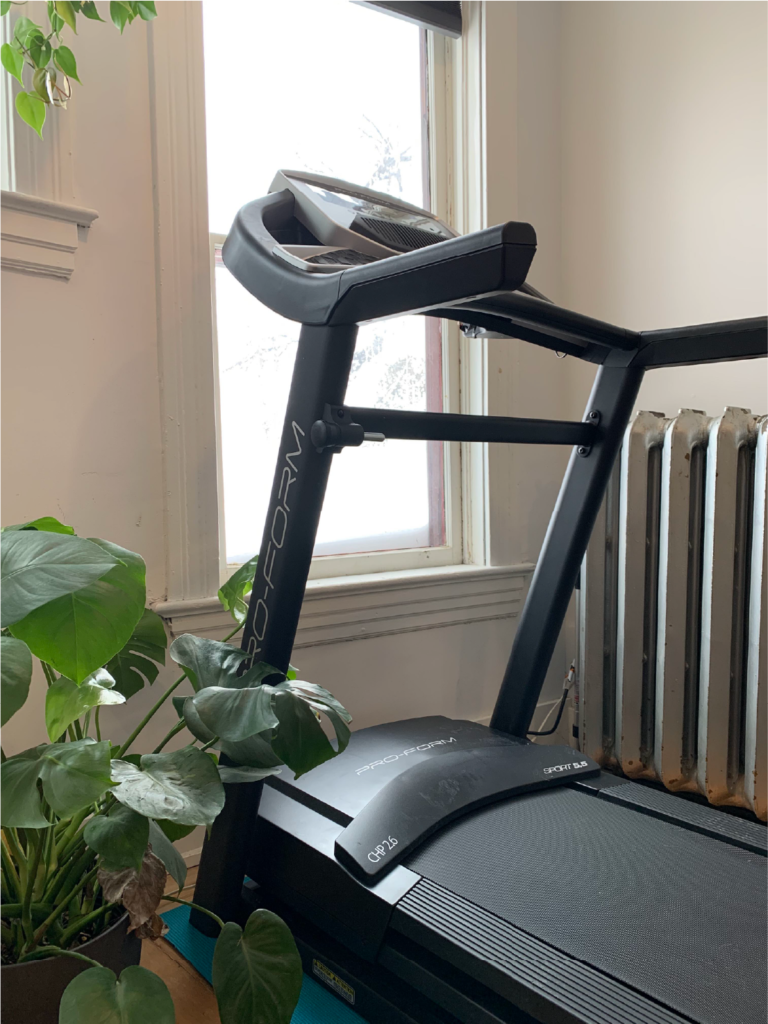
Winter Walking at home
Upon arrival home in the frozen north of Manitoba, we had nearly 3 feet of snow outside and it was -40. Walking around the house room to room wasn’t cutting it so I invested in a modest treadmill to ensure I could get my walks in. I placed it in view of the outdoors and have made regular short walks part of my recovery routine. The walking helps my swelling and energy. It is a truly amazing change as prior to this surgery I couldn’t walk for more than 100 feet without debilitating pain in my legs and ankles. While the backs of my legs are still hurting as they have yet to be done I am hopeful that I am on my way to recovery. A life without constant pain.
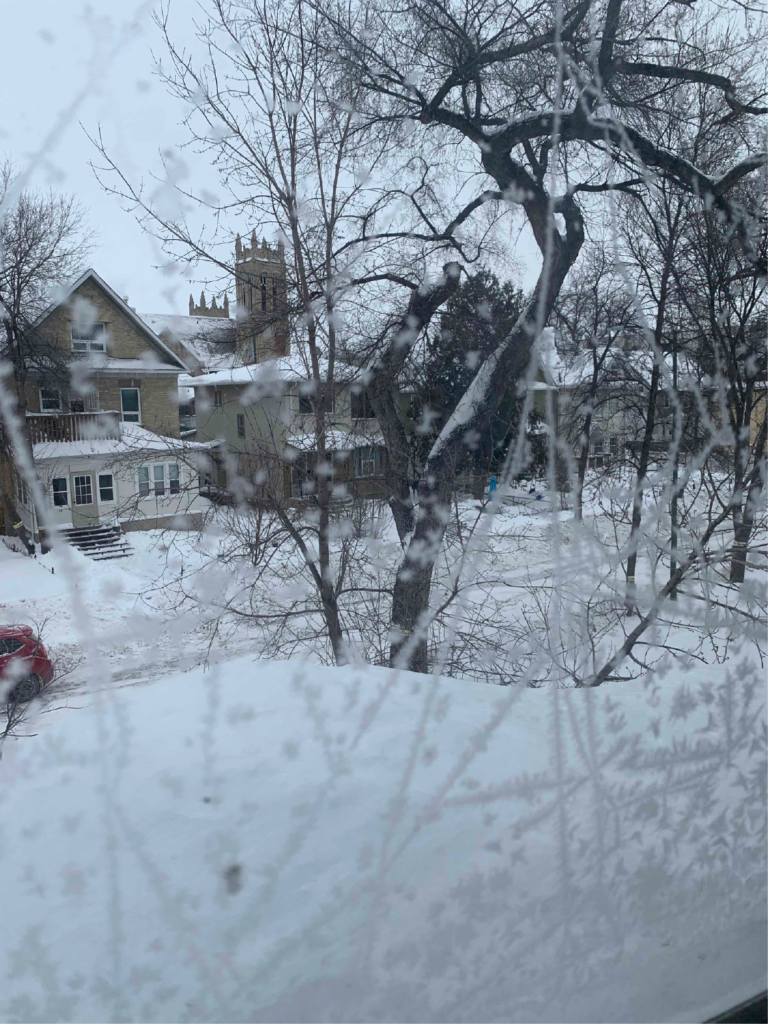
Hyperbaric and MLD
Dr. Schwartz recommended visiting the hyperbaric chamber in L.A for post-op healing. The apparent benefits are decreased swelling, bruising, and pain reduction. I can say that my bruising was significant and after 4 treatments in the hyperbaric chamber I was nearly bruise-free. It was remarkable. I cannot say what the alternative would be like, but I think it’s fair to say I will continue to add this treatment to my recovery care plan for future surgeries. I went to Aalto in Los Angeles.
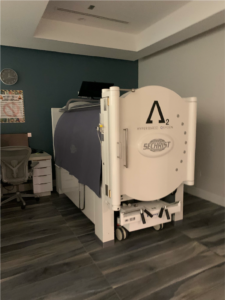
MLD – manual lymphatic drainage
My Love had a crash course in MLD from my local therapist in Winnipeg before we departed for surgery. Between self MLD which was difficult due to swelling and pain, and his MLD work we managed to get some of the swelling moving. In future, I would seek out the treatment of an MLD therapist in L.A for post-op work. Once at home I am in MLD 4 times per week for the first 4 weeks to help reduce the enormous amount of swelling from the surgery. Soon I will reduce the number of sessions to 2x per week and see how my body responds. Find the MLD helpful for breaking up the fibrosis that is happening post-op as well. MLD is a must!
Theragun – works for me!
 I have been using a Theragun to assist with the lymphatic flow for months prior to surgery. It really helps decrease symptoms. I found it very helpful to use on the plane on the way to surgery as it decreased the leg discomfort from flying. Post-op using it on the souls of the feet helped stimulate lymph flow and decreased discomfort and lessened swelling. I was way too sore to use it on my legs post-op, in fact, 4 weeks later I am still not really able to tolerate it on my legs as I used to. Once I can manage it I know it will really help break up the fibrosis that has developed since surgery. If you are considering a Theragun check it out here.
I have been using a Theragun to assist with the lymphatic flow for months prior to surgery. It really helps decrease symptoms. I found it very helpful to use on the plane on the way to surgery as it decreased the leg discomfort from flying. Post-op using it on the souls of the feet helped stimulate lymph flow and decreased discomfort and lessened swelling. I was way too sore to use it on my legs post-op, in fact, 4 weeks later I am still not really able to tolerate it on my legs as I used to. Once I can manage it I know it will really help break up the fibrosis that has developed since surgery. If you are considering a Theragun check it out here.
Post-op Compression
On any given day post-op I fluctuated between 3 sizes of compression. The fluid and swelling shift is remarkable. My surgeon provided me with several pairs of compression including a brand I really liked called Marena. This level 1 (15-20 mmHq) compression allows the body to shift sizes with less resistance. They are bathroom accessible for ease of use. They were super cozy for sleep as well. I did have to switch back to my custom-fit Medivan level 2 garments for long walks and big swelling on days 3 – 6. I added knee-high compression socks for extra compression on my lower legs due to the massive size change from surgery. What I am saying is to bring every type of compression you have to surgery. You will need options hour to hour. I plan to bring smaller pairs of custom fit level 2 compression to my next surgery. Check out Marena.
Pain Management
Post-op pain and nerve symptoms are a big deal as part of the recovery. For me, I found my early pain was overwhelming and I need a lot of support to get through it. I found that taking my nerve pain meds (Lyrca) and keeping my pain meds on a schedule was the most effective way to manage the pain. I needed narcotic support for days 0-3 and then was able to manage with Tylenol and Advil for the remainder of the time. Everyone’s pain is different so each person may need different management. By day 10 I was no longer needing the meds for daily pain management. I still have lots of nerve symptoms that feel like pins and needles in my legs all the time, but I take my Lyrca and walk to manage. Each day it gets a little bit better and soon I hope the nerve stuff will clear up and be but a memory.
Arnica Gel was also used to help with bruising and pain. I am not certain it actually does anything but it felt nice to put cool gel on my hot swollen legs I’d say get some and try it for yourself. Check it out here.
Post-op Hydration and Nutrition
Protein for protein haters
My surgeon wants his patients to drink 3 protein shakes per day following surgery to help with healing. Here’s the thing, from years of dieting I cannot stand protein shakes. I gag! I have tried every variation (whey, Isolate, vegan) and every flavour. I HATE them all. So I found the Bolthouse brand with Keto options at the grocery store in L.A and tried them out. They are good. I was able to manage most of them without adverse reactions akin to cats working up a hairball. I managed at least 2 per day and added protein to each meal in the form of whole foods like eggs and meat. The goal was to do my best with the protein and be kind to myself for hating the stuff. Overall a win.
Electrolytes for recovery
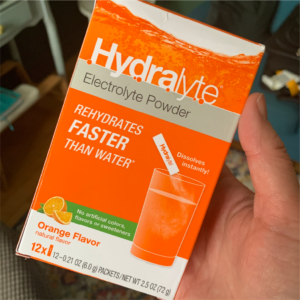 Another big one for me was having at least 2 electrolyte drinks per day to help restore my levels following surgery. When you swell lots of that fluid moves out of your bloodstream, adding the needed lytes kept me from feeling dizzy or nauseated. I used this brand because I don’t want the unwanted sugar from sports drinks. My daily water goal was 4 litres so I often subbed one litre out for this electrolyte drink to help keep my healing on track.
Another big one for me was having at least 2 electrolyte drinks per day to help restore my levels following surgery. When you swell lots of that fluid moves out of your bloodstream, adding the needed lytes kept me from feeling dizzy or nauseated. I used this brand because I don’t want the unwanted sugar from sports drinks. My daily water goal was 4 litres so I often subbed one litre out for this electrolyte drink to help keep my healing on track.
Nutrition and listening to your body
Prior to surgery, I was mostly on Keto. I say mostly because every few weeks I would rebel against the restrictiveness and crave fruits or other carbs. I would hurt all over after my choices but sometimes you need to have the “thing” that’s real life. Following surgery, I had no appetite. I just wanted pineapple. Only pineapple. I have learned to trust my body when it comes to these wild cravings as the body knows what it needs. Pineapple is a wonderful anti-inflammatory food, and with the swelling I was experiencing my body needed healing. All I am saying is to trust your body and be kind to yourself. Ensure you get nutrition post-op to help heal. I drank a lot of protein smoothies and had small nibbles. The appetite does come back eventually.
Hotel room hospital hacks!
There are a few items that I found very helpful for making the hotel room a safe spot for recovery. Following surgery, there are several days of drainage from your operation sites. It is important to anticipate and manage this without embarrassment. I wanted to ensure I didn’t make a mess of the hotel mattress so I purchased a “beach blanket” that came in a fist-sized bag but opened up to cover a queen-sized bed. I placed this under the sheet to protect the mattress and added a queen sheet from home to the hotel bed. Bonus the bed now felt like home (sorta). In addition to the mattress protector, you’ll also need some “puppy pads or chucks”. These are disposable absorbent pads that you can place on the bed and freshen regularly. We taped them across the pillows needed for support. Keeping everything clean and safe. Bringing some handy medical tape is also never a bad thing to have in your survival kit.
Bathroom Hacks
Buy baby wipes, just try me here. To feel fresh and manage the drama of coordinating compression and frequent trips to pee. You’ll want comfort. Remember not to flush them.
Many of the gals suggested a SheWee for every girl’s dream of peeing standing up (not!). Listen I tried it, it had some brief novelty. There was no snow in which to write my name so minus 10 points. Overall I didn’t really need it for my first surgery (anterior legs) although I may feel differently for posterior legs next time.
I am going to level with you. Figuring out compression and trying to pee might lead to some pretty embarrassing moments. I think you get extra recovery points if you pee yourself at least once. My scorecard has been marked appropriately (shame giggle). This brings on an important hotel factor. Access to laundry facilities. Bring your favourite detergent from home (for me that is the eco brand peppermint jazz… Love this stuff) and be sure to have access to the facilities.
Bruising and Swelling
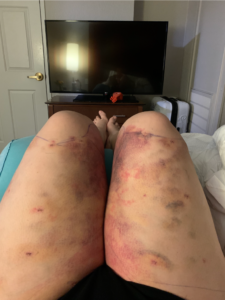 The first time to see your legs without the compression can be jarring. I was black and blue and the swelling was massive. It is important to remind yourself that this is temporary. For me, the swelling was the big one. Each day I could swell so much that I couldn’t get my knees to touch. Would swing wildly from a size 2x compression to a 5x and back to the 2x falling off me. At one point the nurse added ace bandages to my legs to compress them. The swelling changed so drastically an hour later that my bandages fell off while walking in a parking lot. I left my dignity in California. Lol
The first time to see your legs without the compression can be jarring. I was black and blue and the swelling was massive. It is important to remind yourself that this is temporary. For me, the swelling was the big one. Each day I could swell so much that I couldn’t get my knees to touch. Would swing wildly from a size 2x compression to a 5x and back to the 2x falling off me. At one point the nurse added ace bandages to my legs to compress them. The swelling changed so drastically an hour later that my bandages fell off while walking in a parking lot. I left my dignity in California. Lol
At Post-op day 26, I am still struggling with swelling. While it is not as dramatic as before it is still a daily struggle. I have been told that it could take up to a year for the swelling to totally resolve. My swelling increases with activity (walking, kick sledding etc) but it also gets worse if I don’t move enough. It seems to be about a balance, one I am still figuring out.
Recovery Fashion Show
 Let’s face it, being freshly post-op is not the height of glamour. You have tubes and drains coming from everywhere, you are swollen and feeling yucky. The last thing I wanted was to feel prying eyes on me as I walked in appointments around L.A. So here are my hacks for camouflage when you’re out and about. Okay, first thing get yourself a drain belt. It’s a size adjustable belt with soft pockets for holding drains. You wear it under your clothing and it is a lifesaver for even short walks around your hotel room. Keeping the drains tucked and preventing them from pulling was really important to me for comfort. Here’s the one I bought.
Let’s face it, being freshly post-op is not the height of glamour. You have tubes and drains coming from everywhere, you are swollen and feeling yucky. The last thing I wanted was to feel prying eyes on me as I walked in appointments around L.A. So here are my hacks for camouflage when you’re out and about. Okay, first thing get yourself a drain belt. It’s a size adjustable belt with soft pockets for holding drains. You wear it under your clothing and it is a lifesaver for even short walks around your hotel room. Keeping the drains tucked and preventing them from pulling was really important to me for comfort. Here’s the one I bought.
Long Black Dress
The long black dress collection I brought was the perfect camouflage for my swollen legs, tubes and drains and the ease of comfort to wear over my compression. I always wear black anyway, but in this case, the colour choice came in handy to further disguise any stains from recovery. Here is one I bought and loved, it fit my lips arms and went to the ankle. Plus it has pockets! Need I say more? Check it out here
The Full Shopping List
I am not in any way affiliated with any of these products, just trying to help a fellow gal out. Check out the link below for the full shopping list.
Final Thoughts
I am certain that each of us will have a different journey and experience with lipedema surgery. Due to the mystery that surrounds this process, I thought it best to share as much as I could to help support others facing a similar situation. If you have more great tips, tricks and hacks please drop them in the comments.
As always thank you for following me on this journey.
~ Emma
